Innovative vessels showcased in Brussels
Published: Oktober 18, 2019
Green inland shipping event on 16 October 2019 showed the most innovative solutions in inland navigation at the CO2 neutral port of Brussels

Five very innovative vessels called at the port of Brussels to show technological solutions to cut CO2 and air emissions to a minimum to European decision makers and stakeholders. They include zero-emission technologies such as battery-electric, gas-electric, ultra clean bio-fuel drive-trains and hydrogen. Against the background of the recently released Agenda for Europe “A Union that strives for more: My Agenda” of the new Commission President Ursula von der Leyen which lays down a European strategic long-term vision, inland waterway transport offers quality solutions to keep path with the ambitious decarbonisation challenges.
High-ranking representatives of the European Commission, Council and Parliament were guided around on the five vessels and praised the innovative developments in the sector. They see inland navigation and the sector’s ongoing work to reach the EU decarbonisation goals and want to have inland navigation firmly part of a European Green Deal. Brussels Minister for climate transition, environment, energy and participative democracy, Alain Maron, emphasised the important environmental benefits of inland shipping to reach global and European emission goals.
Inland shipping and ports, smart and sustainable
Inland ports, as enablers of green logistics, are supporting the transition by rolling out alternative fuels infrastructure and market measures. As hubs, inland ports envision connecting climate friendly inland shipping with other sustainable transport modes and logistical solutions. Moving forward to further improve its performance, inland shipping aims to reach an emission reduction of more than 50% by 2030 and to sail zero-emission by 2050 offering climate neutral and zero-pollution mobility.
Apart from these goals for the long distance, inland shipping and ports play an increasing role in urban mobility. An initiative of an electric ship for urban delivery of parcels was presented in combination with cargo bikes, completing the last mile. Other innovative solutions demonstrated were unmanned shipping remotely controlled from shore and a pilot with fuel cell/hydrogen technology for zero-emission container shipping.
Important developments because annual road congestion costs reach 1% EU GDP and the GHG emission share of transport continues to rise instead of decreasing. With over 40,000 km of navigable waterways and 250 inland ports, inland waterway transport carries some 560 million tonnes of goods per year and is of increasing importance in the field of cruising and passenger transport. Already today, major industries in Europe are depending on a seamless supply of their goods via waterways. It keeps business and trade up and running, enables the completion of the internal market, and enhances tourism.
Contrary to the congested roads, European waterways still dispose of free capacity, offering a significant modal shift potential. Therefore, fostering clean and reliable transport solutions by waterway transport and inland ports can enable more economic growth in Europe’s waterborne regions and increase prosperity and quality of life.
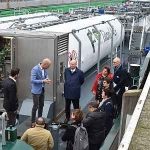
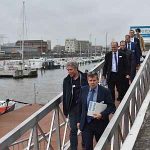
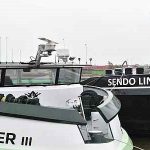
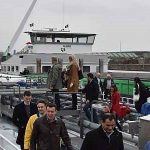

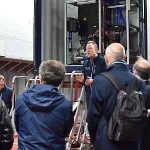
Vessels info and emission reduction profile
- Gas-electric Ecotanker
- Fuel cell hydrogen and hybrid electric Emeli
- Hydrogen dual fuel Hydroville
- Hybrid electric Sendo Liner
- Marinised EURO VI truck engine on ship Wantij
Innovative projects presented
- Future proof shipping Retrofit of existing ship with green hydrogen fuel cell
- Fludis Fully electric floating warehouse for urban delivery with cargo bikes (presentation and website)
- Seafar Unmanned shipping remotely controlled from shore (presentation)
- CoVadem Collaborative ship data harvesting (website)
- Roboat Autonomous electric shipping for urban waterways